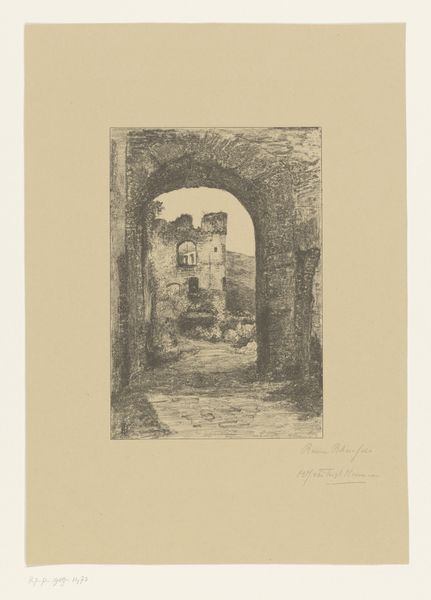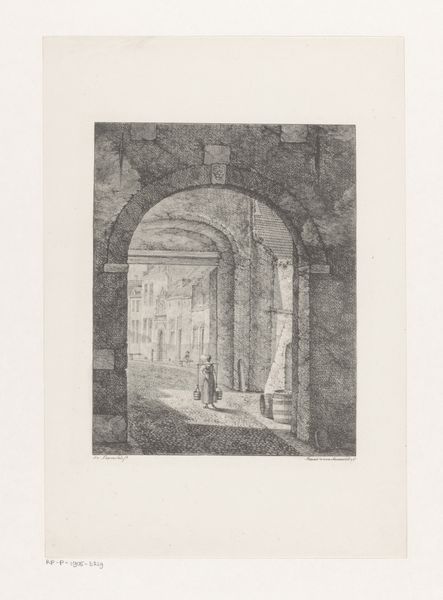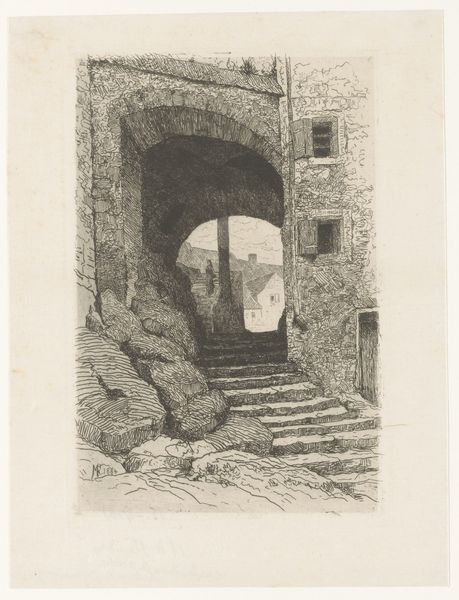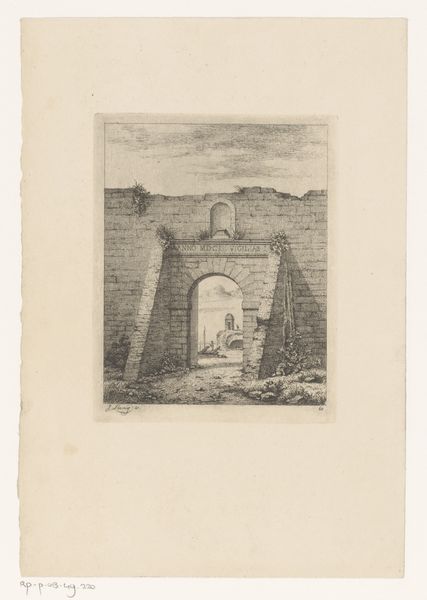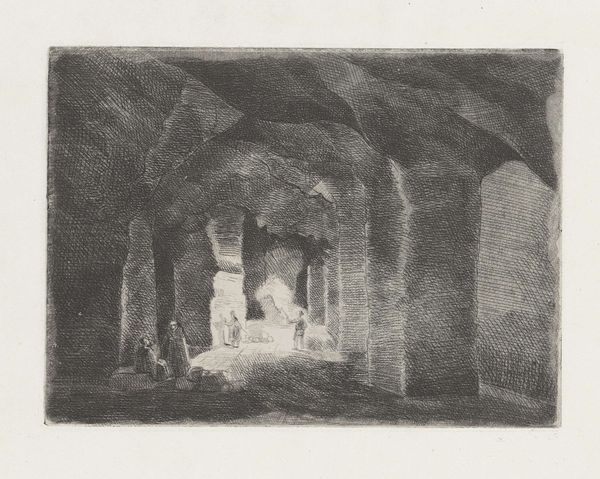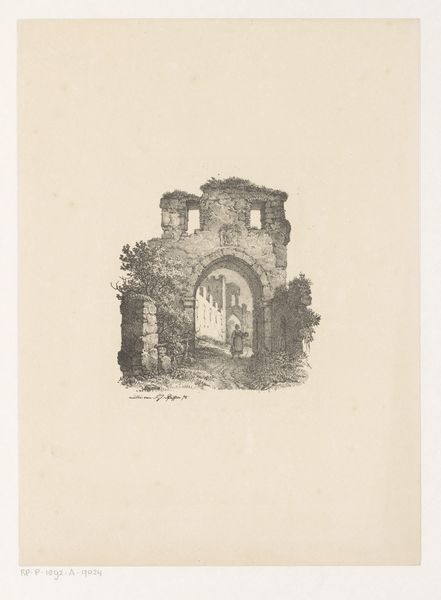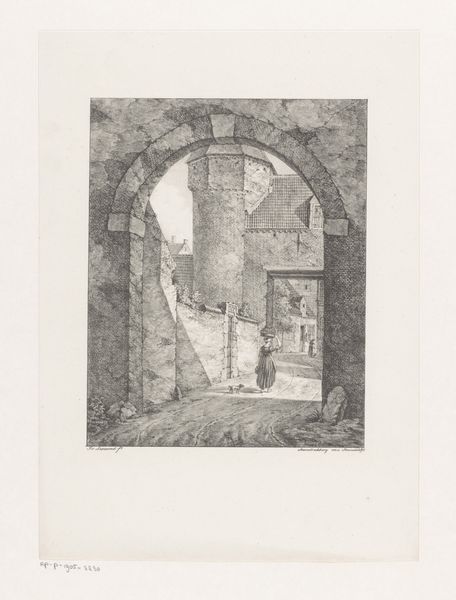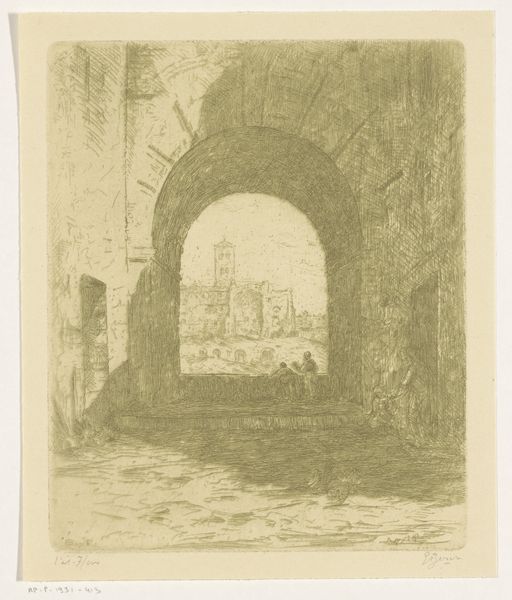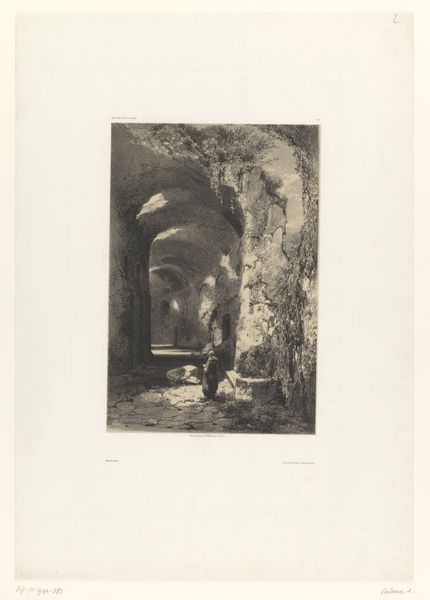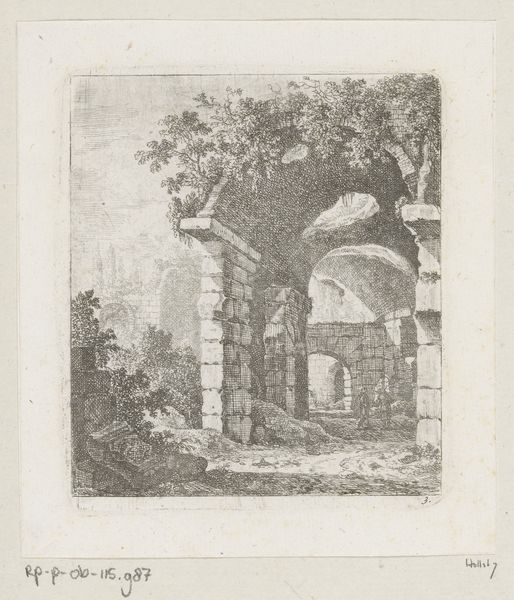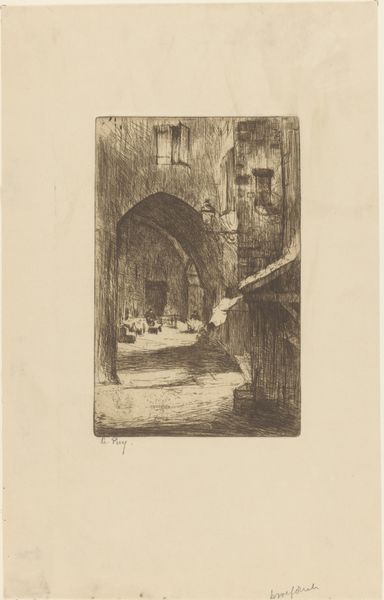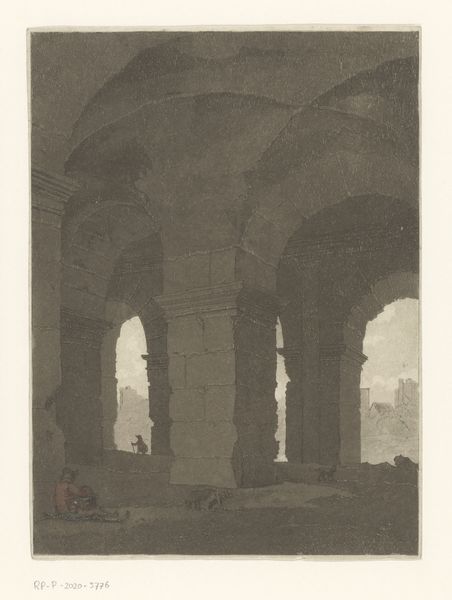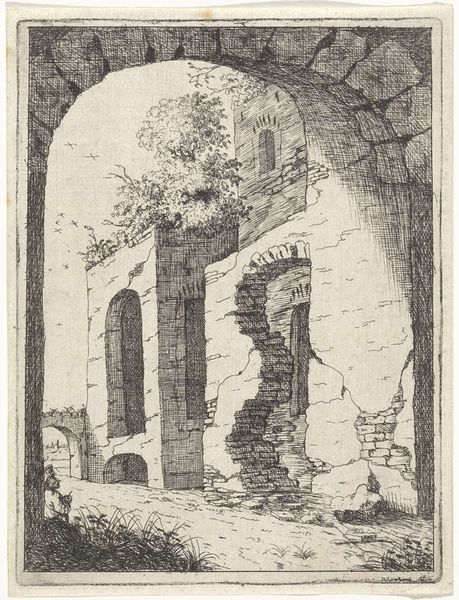
print, etching
# print
#
etching
#
landscape
#
history-painting
Dimensions: height 116 mm, width 98 mm
Copyright: Rijks Museum: Open Domain
Editor: So, here we have Johann Franz Ermels’s etching, "View of the Ruins of the Colosseum," created sometime between 1651 and 1693. The textures are amazing, but the scene is undeniably melancholy, a somber reflection on the decay of something once magnificent. How do you interpret this work? Curator: What I see immediately is a meditation on time and power. Consider the Colosseum, originally a symbol of Roman imperial authority, now rendered as fragmented ruins. Ermels presents us not just with a pretty landscape, but with a political commentary. This echoes a broader 17th-century fascination with ruins as allegories of fallen empires. How do you think its representation here might have resonated with audiences of the time? Editor: Well, given the sociopolitical instability of the era, perhaps it served as a cautionary tale, reminding viewers of the transience of power and the inevitability of decline, a universal destiny applicable not just to ancient Rome, but any contemporary state. Curator: Precisely! Etchings like these were also easily reproduced and disseminated. It is less about simply viewing an artwork and more about accessing and spreading ideologies through popular imagery, a subtle form of political persuasion embedded in everyday visual culture. Do you think the landscape genre downplays or strengthens the political aspect? Editor: It’s a really interesting point. I originally saw it primarily as a landscape, but understanding the historical context makes the political undercurrent much more evident. Curator: Exactly. And hopefully you’ve now begun to see that Ermels doesn't just give us a scene; it presents us with questions about cultural memory. Editor: Yes, the power of the ruin isn’t just in its physical decay, but its ability to prompt viewers to contemplate larger ideas of historical narrative. Thank you!
Comments
No comments
Be the first to comment and join the conversation on the ultimate creative platform.
